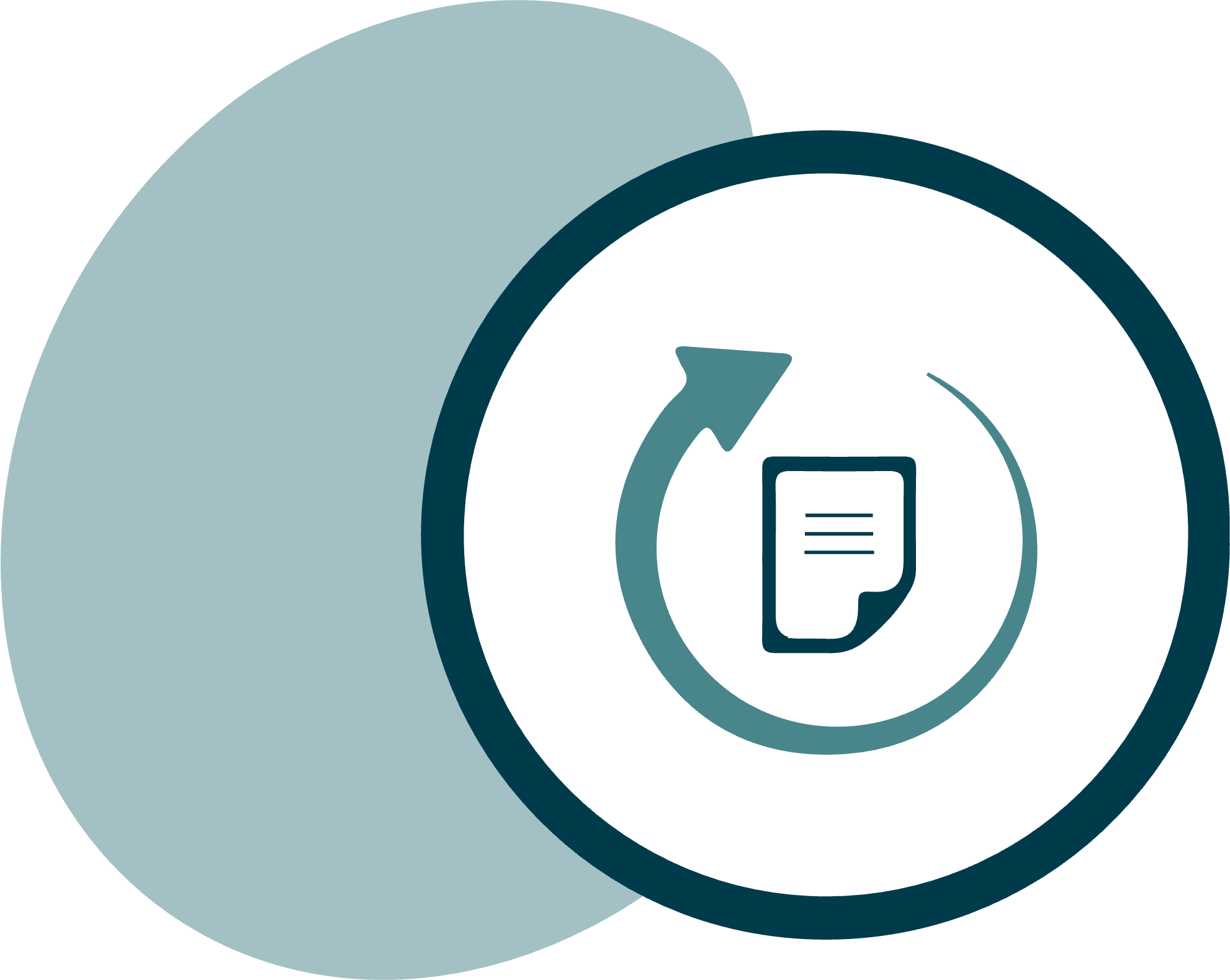CAPA SOFTWARE
Optimise your digital CAPA management
Maximise the efficiency of your corrective and preventive actions (CAPA) through automated, digital workflows. Guarantee the quality of your products and services while at the same time complying with internal and legal requirements.
Consideration of internal and legal requirements
Automated forwarding and escalation management
Real-time overview of all deviation processes

You are currently viewing a placeholder content from YouTube. To access the actual content, click the button below. Please note that doing so will share data with third-party providers.
More Information» dls | capa «
Software for your CAPA processes
Control your production-related quality management processes, including corrective and preventive actions (CAPA), with our advanced digital workflows. Our integrated solutions completely transform your existing paper-based process into a digital workflow — from recording to completion.
Thanks to our efficient workflow system, the digital CAPA form is automatically forwarded to the next instance. If time is exceeded, the reminder and escalation management system proactively intervenes to avoid delays. In addition, an integrated regulation for task routing guarantees the authorisation of substitutes so that the continuity of processes is ensured even in the event of absences.
How can you benefit from the CAPA software?
Process safety
After each step, the workflow system ensures that the CAPA is forwarded to the person in charge. The escalation system takes effect in case of missed deadlines.
Data integrity
All corrective and preventive actions (CAPAs) are recorded digitally, which prevents the loss of relevant information. Your data is also protected against unauthorised access and possible damage.
Constant availability
Access your data at any time and from anywhere - regardless of your location.
Central information platform
Use d.velop documents (formerly d.3ecm) as a central source of information to retrieve your data efficiently.
Traceability
Link CAPAs with modules such as change management (change control) for seamless documentation of all individual processes. CAPAs can be initiated, for example, from deviation reports or can initiate a change process.
Transparency
Every authorised employee has access to the current status of all CAPA processes, regardless of their role in the process.
Individual configuration
Customise the modules to your specific requirements to facilitate the onboarding process for your colleagues.
Reports
Create comprehensive reports and statistics on your CAPAs for well-founded decisions.
Get a first overview.

The digital forms are also converted to a PDF/A in parallel. This way, employees who are not involved in the process can also gain insight into the workflow and the document can be shared with external parties if required.
What is a CAPA process?
The CAPA process (Corrective and Preventive Action) allows drug safety errors/deviations to be systematically recorded and processed in conformity with regulatory and internal specifications. In the process, CAPA management focuses on the elimination of nonconformities (corrective action) and the avoidance of potential nonconformities (preventive action).
Nonconformities follow, for example, from a process deviation that results in certain corrective actions that can eliminate the existing problem.
For example, a preventive measure could result from an OOT analysis. No actual nonconformity has occurred here yet, but a degradation of the validated process has been noted.
The CAPA process can thus ensure continuous product quality.
Every action in the process is automatically documented by the system accordingly. Integrated audit trail functions ensure high traceability.
The digital form is filled out step by step and provided with the relevant entries and data. Fields with a blue background are mandatory. Predefined value sets and drop-down functions make it easy for users to fill out the form.
After processing the individual steps (1. Initiation, 2. Recording of measures and risks, 3. Expert committee, etc.), the workflow system automatically sends tasks and messages to the responsible agents or workflow participants. Once all steps have been processed, the workflow is considered complete.
1. Step: Initiation
The CAPA process is initiated by the person responsible for the process of the affected department. He or she records the relevant data for CAPA. The process is then forwarded to the appointed CAPA responsible.
Would you like a live insight into the CAPA software?
Get a comprehensive live insight into the possibilities of production-related quality management processes within just 45 minutes using a specific use case. Learn how you can efficiently use Digital Life Sciences solutions to optimize your production-related QM processes, such as complaints (Complaint Management), deviation reports (deviation control), corrective and preventive actions (CAPA) and change management (change control) through our digital workflows.
Features of the Corrective And Preventive Actions software
- Automatic classification of deviations based on entered metadata
- Referencing master data from your ERP system
- Integrated substitution rules for limited availability
- Initiation of the individual tasks for the further processing of the workflow
- Adding documents, such as digital photos, to your CAPA form
- Initiation of a document change request for a controlled document
- Escalation messages both within the system and by e‑mail
- Automatic PDF creation and storage of the form in the eDMS after each step
Regulatory requirements in the CAPA process
33 Good reasons for a cooperation with Digital LS
You’re not convinced yet? You’re not convinced yet? Find out about 33 good reasons speaking for a cooperation with Digital Life Sciences GmbH. We will show you reasons from the provider’s point of view, from the software point of view and other general reasons that distinguish us.
Customer review on the CAPA Management
“With the project team from Digital Life Sciences, it was possible to implement the new DMS quickly in only three months. The modular structure of the system additionally allows a coordinated step-by-step expansion of the scope. The software was quickly accepted by all employees due to its clear design, which not only simplified the processes and release cycles in a very short time, but also improved their quality."

You might also like…
CAPA Management is a component of the Digital Life Sciences solution suite. Each product is powerful on its own, but when used together they are even better.

Document Control software
Whether work / process instructions (SOPs), process descriptions, test specifications or other types of documents — you can create, revise and sign them all digitally with the document control software.

Training Management software
Extend the “Document Control” module to actively plan and record the qualifications of your employees with our training management software.

E‑learning software
Use the new software “E‑Learning” to train your employees digitally. Create an e‑learning course according to your wishes using Microsoft PowerPoint or integrate existing presentations.
Frequently asked questions (FAQs) about CAPA
Are there time limits for the execution of the process steps?
In the administration, time specifications can be entered for each process step. Reminder messages are sent before the process steps are due. The reminder message is sent to the processor of the task, the coordinator and the configured group that is to be informed about the reminder (for example, QA). A reminder is sent with the configured subject.
Can attachments be stored with a CAPA?
If additional files are required for a process, attachments can be uploaded in all process steps and linked to the current process. The attachments are stored under a corresponding document type in the DMS and can be viewed in CAPA under ‘Attachments’ by all process participants. You can configure which file types can be saved as attachments and how large the files can be.
Can a process be cancelled?
It can be configured so that the process can be cancelled at any process step. For the cancellation, it is required to indicate a reason in a mandatory field. Only the coordinator of the process is allowed to cancel.
Are there templates for measures in a CAPA?
Having entered a measure, you can save it as a template in the measure table. The templates are available for insertion in a CAPA. The due date for the measure is calculated based on the duration entered in the template.
Can process steps be subsequently corrected?
In principle, a process step is completed with an electronic signature and can no longer be corrected. With the function ‘Step back’ the process can be returned to a previous process step. The user who has completed this step receives it again for editing and the process continues from this step. Any return to a previous step is recorded in the audit trail.
What is CAPA and why is it important in quality management?
CAPA stands for Corrective and Preventive Actions. This process is a central component of the quality management system (QMS) and serves to identify and rectify problems and prevent future incidents.
Corrective actions are aimed at analysing existing problems or deviations and implementing permanent solutions to prevent their recurrence. Preventive actions, on the other hand, deal with the identification of potential problems and the introduction of measures to prevent them from occurring in the first place.
The importance of CAPA lies in its ability to promote the continuous improvement of a company’s processes and products. By systematically recording, analysing and eliminating errors and taking precautions against potential risks, CAPA makes a significant contribution to improving product quality, complying with regulatory requirements and increasing customer satisfaction.
Can tasks be delegated?
In all process steps that follow the initiation, you can forward the process step to another person. The recipient’s authorization is checked during the selection.
Can I analyze the CAPAs?
The essential data of a CAPA is transferred to the attributes of the data record. This allows you to search and analyze the CAPAs you have created. The analyses can be exported as PDF, EXCEL or WORD documents.
Can the predefined steps be customized?
The CAPA process flow has been designed in accordance with the GxP regulations and created in consultation with QM experts. Against the background of the validation documentation, the process steps are therefore mandatory. However, each process step contains a ‘Custom Panel’, which can be used to display further information or initiate actions.
Can the predefined designations be changed?
In the workflow administration, you can configure the names of the process steps, field names and datasets.
Are the contents of all process steps visible?
When working on a process step, only this step can be processed, but the other process steps are still visible.
How is the CAPA process implemented in practice?
The implementation of the CAPA process usually follows several standardised steps that ensure the systematic and effective processing of corrective and preventive measures:
1. Problem identification
- Deviations: Identification of problems such as production errors, complaints or internal audit results that indicate a deviation from the defined processes.
- Non-conformities: Identification of discrepancies with regard to regulatory requirements, such as the EU GMP guidelines, as well as internal quality standards.
2. Root cause analysis
- Investigation: Systematic analysis to determine the root cause of the problem.
- Data analysis: Analysis of process and production data to detect patterns that help identify root causes.
3. Corrective actions
- Development of measures: Based on the root cause analysis, concrete steps are developed to rectify the problems. This can include adjustments to work instructions, technical specifications or production processes.
- Implementation: The measures developed are integrated into the relevant processes. Adjustments to the software or production layout may be necessary.
4. Preventive actions
- Risk evaluation: Once the problem has been resolved, a thorough evaluation is carried out to determine whether similar problems could occur in other sections or processes.
- Preventive measures: Preventive actions are implemented to prevent recurrences of the problem. This includes training for staff, improvements in process monitoring and adjustments in the area of quality control.
5. Effectiveness check
- Verification: Once the corrective and preventive measures have been implemented, a review is carried out to ensure that the measures are effective and that the problem has been solved sustainably.
- Long-term monitoring: Continuous monitoring of the processes and results ensures that the preventive actions are successful and that no new deviations occur.
6. Documentation and reporting
- Logging: All steps of the CAPA process — from problem identification to effectiveness check — are comprehensively documented. This is essential for proving compliance with regulatory requirements.
- Audit Trail: A complete audit trail is provided in a digital CAPA system, which proves that every measure was carried out and documented properly.
7. Continuous improvement
- The CAPA process is cyclical and promotes the continuous improvement of the quality management system (QMS). The insights gained are incorporated into strategic planning and process optimisation.
Through this systematic approach, the CAPA process ensures that problems are not only resolved in the short term, but that future risks are also minimised, which ultimately leads to a sustainable improvement in quality.
Quick contact
Do you have a question about the CAPA module?
Our sales team will help you promptly and gladly.
